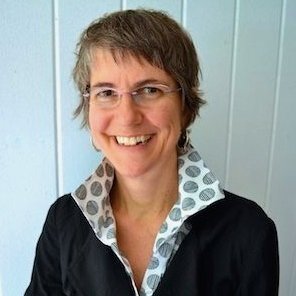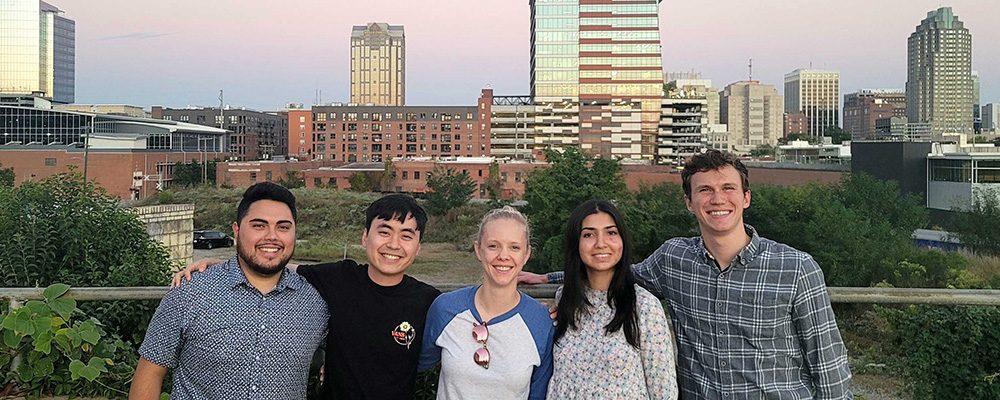“When you have a skill and ability to do things with data that most of your stakeholders are not going to understand, it gives you a significant responsibility to make sure that you do so in a way that is ethical.” -Polly Mitchell-Guthrie

Charlie: Please provide an overview of your career progression and how you ended up in your current role in the Enterprise Analytics and Data Sciences group at the University of North Carolina Health Care System.
Polly: I always say I am an anomaly (or a singularity, depending on term somebody prefers – the mathematicians always want me to call myself a singularity), because not only do I have an MBA and not a data science degree, I’m not a hands-on data scientist. I got into this space because I worked at SAS a lot of years, the last 8 years working in advanced analytics R & D, and my job was to be a mile wide and a few inches deep, working with the experts who were typically only an inch wide and a mile deep. If you’re the structural equation procedure model builder, we really don’t need you to know anything about data mining, and you probably don’t. I know a little bit about all of the above. As a result, my focus was heavily on trying to connect the power of advanced analytics and various methods, and help customers with problems connect to experts, even if they might not know that this might be an econometric problem. I was a bridge-builder and that was the main focus of my role. I’ve leveraged that in my current role as I have a pretty good understanding at an applied level of how advanced analytics can address business problems, and through my networks I’ve built a team to take that on.
Charlie: What projects have you been working on at UNC?
Polly: The biggest one is at Rex Hospital, working on optimizing patient throughput. That basically means trying to speed anything through a process. The difference in a hospital working with patients is that there is a lot more variability and randomness than you would see in a factory. For example, in the emergency department you could have a safe room for dangerous patients used twice a week one week, and then it might not be used for two months. As a random process, it’s harder to model. We’re working on that using optimization and discrete event simulation.
We are forecasting demand for patient appointments; if you can forecast demand more accurately using statistical forecasts versus the rules they’ve been using, you can better match supply and demand so that waiting is minimized for patients and providers.
All the people I’ve hired have come from outside healthcare – I would have loved to have found people in healthcare, but it’s very hard to find people in healthcare who have data science skills and experience – and what we learned to do is translate problems from things like transportation logistics. The same way that you don’t want a “deadhead” truck driving with no cargo, you don’t want a gurney being pushed without a patient on it.
Charlie: With the types of challenges you described, who are your stakeholders? How do you get the information that you need?
Polly: My team’s particular charge is to take on consulting projects versus ongoing solution development, many of which are driven heavily by senior executive stakeholders. In some ways they tend to be better educated about analytics, at least as a concept; they’re not going to do anything hands-on, but they understand that you can make better decisions if you use modeling in some way. The challenge is usually getting clear on exactly what the business problem is. They know generally, for example, “we want to improve throughput.” This is an optimization challenge: are you trying to minimize length of stay, are you trying to maximize discharges by noon, are you trying to minimize boarding in the emergency department? It gets fuzzier once you get down to the details.
Charlie: You recently gave a talk at the Institute for Advanced Analytics about CAP certification, which you had a role in developing. You spoke passionately about the inclusion of ethics in the certification. How did that come about?
Polly: To the degree that most people don’t understand analytics, when you have a skill and ability to do things with data that most of your stakeholders are not going to understand, it gives you a significant responsibility to make sure that you do so in a way that is ethical. You can take it in directions that bias it in a manner that fits your agenda, and your stakeholders may not even know that you’ve done that. That’s an explicit bias.
There’s also an implicit bias in terms of people’s lack of understanding that on the one hand people tend to think that machine learning or artificial intelligence – which are bandied about too much these days – are objective because they are all about data. They can be objective if the model is built well. The New York Times had a recent article on using predictive analytics to help caseworkers better understand when to intervene with children. They argue that the algorithm can help them with more objectivity, because it’s theoretically neutral, as opposed to the clear biases that we as humans all know we have. The machine will do whatever you tell it to – it will inherit our human biases – so we have to make sure we have a diverse group of stakeholders building models.
It’s essential that we recognize that not everybody will understand what you do, and so you have the responsibility to check out your assumptions and discuss those with your stakeholders.
Charlie: You lead the Women in Machine Learning in North Carolina. Please talk about how that was developed and the benefits of a women-focused group.
Polly: The way it was developed was a classic example of some of the challenges women can face. I was working at SAS at the time, when the SAS sales rep for the American Express account reached out to see if we could get engaged. At the time there were only chapters in New York and San Francisco. There wasn’t really a way to get involved, so she suggested we start a chapter in North Carolina. A lot of research has shown that women are reluctant to step up to the plate, even if they have the skills or talent, and there are situations where women who have greater skills and are more qualified – even in ways that can be objectively quantified – are more reluctant to put themselves up for a position. SAS agreed to support it, we had a great kick-off, and there’s been tremendous interest ever since then.
The reason I think it matters is that there are countless examples of women who don’t feel their voices are heard in meetings; women are the minority in these fields, and if you don’t have a certain critical mass, people tend to be quieter. Men are welcome to come to our meetings as long as they don’t become the majority – this has been an issue in some of the bigger cities, but hasn’t been an issue here – so we welcome any men who are supportive of our mission. All of our speakers so far have been women, showing that there are lots of ways to have success in the field, and that people who do data science aren’t just white men in hoodies in the Bay Area.
Charlie: Your LinkedIn image is a network, and you describe yourself as “bridge builder.” Has this always been the case for you, or is it something that you cultivated? Do you have advice for anyone who is working to develop these skills?
Polly: It is both part of my nature and something I’ve cultivated as a strength. My interests are wide and diverse, and I tend to be a part of lots of different groups. I’m able to bridge the gap when people aren’t able to communicate well. The work I did at SAS was a perfect example of this. The sales and marketing people need to understand analytics, but have trouble when they talk to R & D people, who just want to talk about the math; R & D people really need to talk to people about the value of advanced analytics, but they don’t have the patience to talk to marketing people.
I make it a pretty regular practice to meet people. When I started at UNC I didn’t know health care at all other than my own experience as a consumer. I built a list of people that other people told me would be good to talk to: senior executives as well as a variety of stakeholders, internal and external to the healthcare system. Every time I would meet with somebody I’d ask who else I should meet with. I lost track of how many people I met with in six months.
I would have one or two of these meetings each week, and would say, “here’s my agenda, I am new to healthcare, I don’t know anything about it, and I’m trying to learn. I’d love to know what you do, how you got into healthcare, and why you stayed.” That was more than enough fruit for good conversation, and I learned a lot along the way. Some of those conversations were more useful for me than others, some gave me a lot, and others just one or two nuggets. I would encourage anyone to make a practice of meeting with people regularly, whether it be within your organization or industry, meet people however works for you. I have found, with very rare exceptions, that if I reach out to people for help, they’re happy to meet with me.
One resource in particular that I would recommend is a book called The 20-Minute Networking Meeting; there’s a version for students as well. If you respect people’s time, people are generally good about giving it, and if you’re very focused in how you use that time, you can get great information.
Columnist: Charlie Sheets
